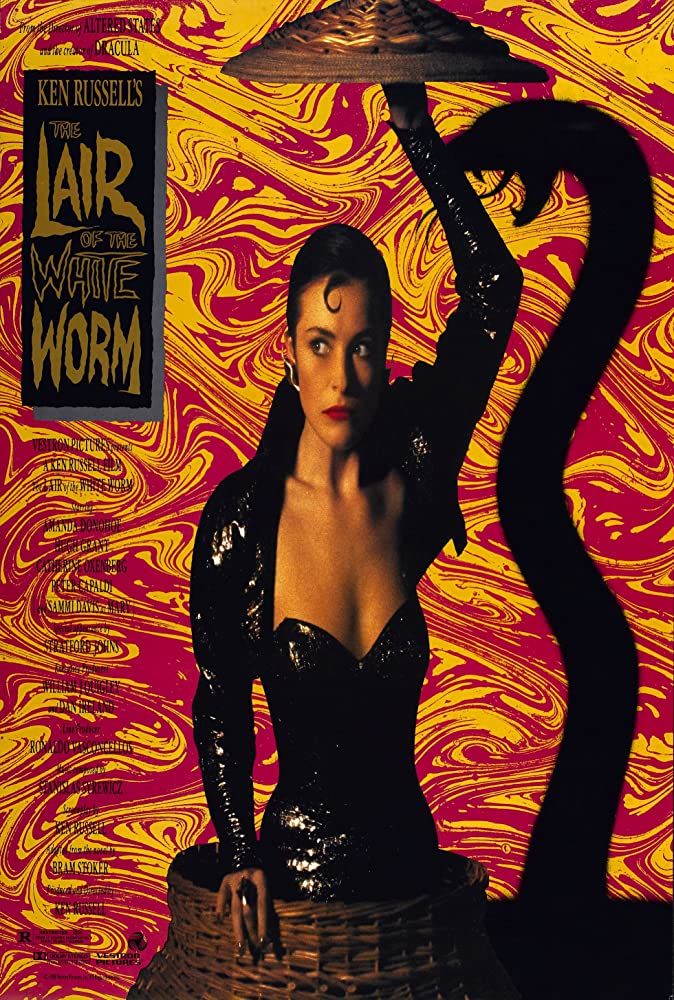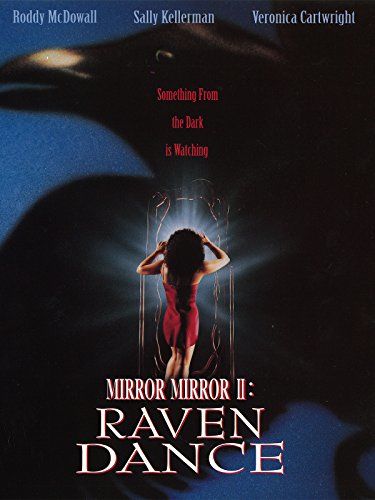We all have to start somewhere and for some of Hollywood’s greats that was acting in B Horror movies. I think you will be pleasantly surprised to find out who of the current Hollywood elite have had parts in some pretty bad B Horror movies. From seductive snake people to genetically altered tomatoe invasions, they have done it all. And by bad I mean totally worth watching as soon as humanly possible.

Hugh Grant – The Lair of The White Worm
Yep, you read that right, romcom star Hugh Grant was in a horror movie and a weird one at that. Lair of The White Worm directed by Ken Russel is just plain strange. Grant plays the hero who comes from a long family lineage of battling the noted White Worm(s). Synopsis: When an archaeologist uncovers a strange skull in a foreign land, the residents of a nearby town begin to disappear, leading to further inexplicable occurrences. The investigation leads to a sort of snake cult that ultimately Grant helps to dispatch. If you have never seen a Ken Russel film I say why not start here. It’s a bit odd but it’s also a pretty good time. Your first Grant sighting might throw you off but after a while, you’ll find he plays a convincing hero here.
Mark Ruffalo – Mirror Mirror 2 Raven Dance

Avengers Mark Ruffalo had to start somewhere and in the 1990’s it turns out horror was an option. You’ve probably never heard of this horror movie and well there is a reason for that. In Mirror Mirror 2 Raven Dance – A ghostly mirror is found hidden in a church orphanage, yet few realize its legacy of evil. When an innocent teen discovers that she is being stalked by her evil stepsister, the mirror’s demonic power is again unleashed. As the mirror gains strength from the blood of the damned, the ultimate battle between good and evil begins. This was one of the first few films he was in and he apparently liked it so much he went back for Mirror Mirror 3.
Katherine Heigl – Valentine

Valentine’s Day 1980 something: The story starts at the school dance where a geeky Jeremy Melton faces one rejection after another when asking four popular girls to dance with him. A fifth, less popular girl, agrees, and they end up making out under the bleachers. When a group of school bullies catches them, the girl claims that Jeremy attacked her. The bullies proceed to strip off his clothes and beat him up in front of the entire school. Fast forward to 2001 where the students are all now in their 20s. After a disastrous date with a loser, one of the girls, a pre-med student, is murdered by a Cherub-mask wearing killer who sent her a death threat in the form of a Valentine card prior to the attack. After the four remaining girls are reunited at her funeral, they all start receiving similar cards and the slasher mayhem ensues.
Katherine Heigl doesn’t make it more than 8 minutes into this one before she is murdered but her name still appears on the top of the movie poster for obvious reasons.
George Clooney – Return to Horror High/Return of The Killer Tomatoes

George Clooney grabbed two classic B Horror movies for his credits.
Return to Horror High – In 1982, at Crippen High School, a serial killer escapes justice following a murderous rampage. Five years later, Cosmic Pictures comes to town to make a film about the Crippen High murders in the abandoned school where they occurred. However, shortly after filming begins, police are called to the scene to investigate another massacre.
Return of The Killer Tomatoes – The title pretty much sums up this horror comedy franchise but just in case here is a quick rundown. Crazy old Professor Gangreen has developed a way to make tomatoes look human for a second invasion. And there you have it genetically altered tomatoes that attack!
Leonardo Dicaprio – Critters 3

The critters franchise holds dear to my heart. Although it never went fully mainstream it is a classic in many horror collectors libraries, mine included. Leo is so young in the movie you will barely know it’s him, but there he is in one of his first full length movies.
In what appears to be a cross between Critters and The Towering Inferno, the residents of a shoddy L.A. apartment block are chased up to the roof by hoards of the eponymous hairy horrors. These little cryptids went on for 2 more movies with the latest Critters movie being 2019. Maybe more stars will be born before they are done!
Brad Pitt – Cutting Class

Another Hollywood super star who kicked it off in Horror. Brad is as Brad as ever in this one so it’s no surprise that he went on to greatness afterwards. He never fully left the genre though as he has more credits back in horror notably with the movie Seven.
Synopsis – High school student Paula Carson’s affections are being sought after by two of her classmates: Dwight, the “bad boy”, and Brian, a disturbed young man who has just been released from a mental hospital where he was committed following the suspicious death of his father. Soon after being released, more murders start happening. Is Brian back to his old tricks, or is Dwight just trying to eliminate the competition?
Tom Hanks – He Knows You’re Alone

Tom Hanks!?! Yep even Tom Hanks put in his horror time with this 80’s slasher flick.
Synopsis – A reluctant bride to be is stalked by a serial killer who stalks and kills brides and well anyone around them. While her friends get whacked one by one, a hard boiled renegade cop whose bride had been killed years before tries to hunt him down before it is too late. Meanwhile, the bride has to figure out if it is all in her imagination or not, aided by her ex-boyfriend.
Jennifer Aniston – Leprechaun

If this were a top ten list Leprechaun with Jennifer Anniston would likely be #1. This 90’s gem has become a classic for any horror lover. I mean who wouldn’t love a murderous tiny Leprechaun running amok? If you watch this beware that Lucky Charms will never be the same!
Synopsis – When Dan O’Grady returns to the U.S. after stealing some Irish leprechaun’s pot of gold, he thinks he can settle down and enjoy his newfound wealth. He thought wrong. The leprechaun followed him and O’Grady barely gets away with his life, having locked the little monster in his basement. Ten years later, J.D. and his spoiled daughter Tory (Anniston) move in. By accident, the leprechaun is released and almost immediately the murderous creature starts to look for his gold, not displaying any respect for human life.
We here at Puzzle Box Horror spend most of our time looking into the history and lore of horror. From ghosts and hauntings, authors, and movies to strange creatures you have never heard of this is what we do. Stop by anytime to learn more about the roots of horror.

Tritone’s love of horror and mystery began at a young age. Growing up in the 80’s he got to see some of the greatest horror movies play out in the best of venues, the drive-in theater. That’s when his obsession with the genre really began—but it wasn’t just the movies, it was the games, the books, the comics, and the lore behind it all that really ignited his obsession. Tritone is a published author and continues to write and write about horror whenever possible.
